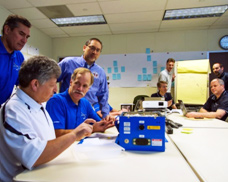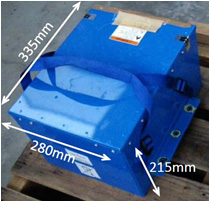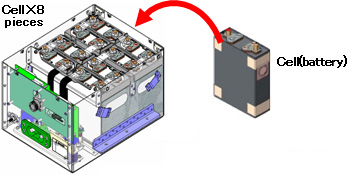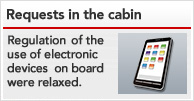Top of page.
- Skip the menu to main contents.
Link for header starts here.
This page is located under the following page structure
- HOME
- Safety and Flight Information
- The operation of Boeing 787
- Background to the Suspension of 787 Operations
- Issuance of Airworthiness Directives
- Mechanism of Battery Failure
.
Main text starts here.
Mechanism of Battery Failure

The mechanism of a battery failure which would send smoke into the cabin was examined by Boeing's project team, which was put together to develop a package of preventive measures.
The project team found that the battery failure that would send smoke into the cabin was triggered by the overheating of one of the 8 battery cells in the blue battery case, for some reason.
 787 BatterySource; Transport Safety Board
787 BatterySource; Transport Safety Board
 Structure inside the battery
Structure inside the battery
First, one cell overheated.
When a cell overheats, electrolyte fluid inside the cell vaporizes into white vapor (fumes), which is released outside the cell, and subsequently, the cell no longer functions.
Heat is transmitted to other cells and they also overheat.
The cell is designed so that it does not affect the other cells in the event of overheating. But in the battery failures that occurred, it was found that when one of the cells overheated and lost its function, it might have affected the other cells. For example, it might have short-circuited and transmitted large electric currents or heat to other cells. U.S. and Japan transportation investigative agencies have stated that overheating of one cell initially occurred in the battery failure.
 Mechanism of battery failure that was identified in the investigations
Mechanism of battery failure that was identified in the investigations
Link for skipping between webpages starts here.
- Safety and Flight Information
-
- Safety Charter
- Safety Operations
- Operation Data
- The operation of Boeing 787
Footer link starts here.

